Surprising fact: Italy alone holds 60 UNESCO World Heritage Sites, and many top sights are far quieter in shoulder seasons. I made this guide so you can quickly find a country that matches your style—food, culture, beaches, or adventure—without wasting time on choices that feel wrong.
I evaluated each country by service, food, infrastructure, nature, prices, history, sights, and climate. This gives a balanced snapshot of strengths and trade-offs for each country.
I’ll preview icons like Italy’s UNESCO-packed cities and Spain’s Moorish palaces, plus Scotland’s wild landscapes, France’s coastline, and Germany’s museum-rich cities. I also explain why shoulder seasons (March–June, September–mid-November) often offer great weather, fewer lines, and better availability.
My travel style mixes cities with coast or mountains so a short trip feels lively, not rushed. You’ll find quick lists of top places, best time notes, and realistic how-many-days advice to match your available time.
Key Takeaways
- I rank nations using eight practical criteria for a balanced view.
- Italy’s 60 UNESCO sites make it a must-see cultural hub.
- Shoulder seasons usually offer the best mix of weather and crowds.
- Mix cities with nature for energy and fewer burned-out days on a trip.
- I include realistic day counts and route tips for easy planning.
How I chose my picks and why you can trust this list
https://www.youtube.com/watch?v=TBy00Y_SI8c
These selections are the result of fieldwork, layered with measurable travel criteria. I ranked each country using eight clear factors: service, food and wine, transport ease, nature variety, prices, depth of history, density of sights, and climate. This gives a practical lens, not a hobbyist list.
I’ve spent long stretches returning to the same cities and regions in different seasons to see how weather, crowds, and rhythm change. That experience taught me when an area shines and when it drags — which matters if you have limited time.
Logistics got heavy weight. I checked rail, highway, and bus links because getting between major hubs and small towns can make or break short trips. I also balanced value for money so you can match budget and experience when picking a destination europe.
What I did for you:
- I tested itineraries I’ve ever refined and noted realistic things see within reasonable days.
- I compared nearby options and pointed out who wins at food, museums, or coastlines.
- I’m upfront about downsides like crowds and heat, so you can plan around them.
Italy: Culture-soaked cities, Alps-to-coast nature, and food that ruins you for life
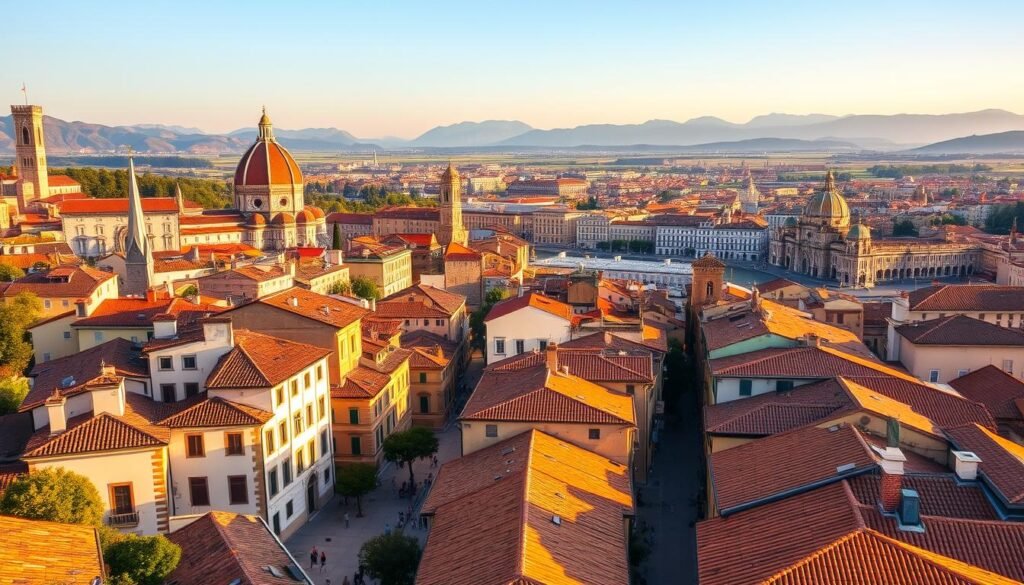
Italy wraps ancient streets, mountain trails, and coastline lunches into one unforgettable loop. I plan trips by region so a single week feels full but not frantic. For longer trips I stitch two regions together: a city run plus a coast or mountains leg.
Where I go: Rome’s layers of history, Florence’s art, Venice’s canals, Tuscany’s hill towns, the Dolomites’ hikes, and Amalfi’s cliff roads top my list of places. Italy has 60 UNESCO World Heritage Sites, which explains why each city rewards extra slow time.
When I travel: I favor spring fall shoulder seasons—March–May and September–November—because the light is kinder and lines are shorter. Rail links make city hops easy; a rental car shines in rural zones like Tuscany or the Dolomites.
Practical snapshot
| Region | Highlights | Transport | Price note |
|---|---|---|---|
| Rome & Florence | Ancient sites, museums, food markets | Fast rail; walkable city cores | Mid-high, timed entries save hours |
| Tuscany & Amalfi | Hill towns, vineyards, cliffside drives | Car recommended for villages; day trips | Amalfi hotspots cost more; inland saves |
| Venice & Dolomites | Canals, alpine hiking, dramatic views | Rail to city, car for mountain passes | North pricier; peaks need gear |
Spain: Sun, tapas, vibrant cities, and island escapes
Spain mixes sunlit plazas, late-night tapas, and island coves that keep me returning. It draws roughly 80 million visitors a year, and I use good transport links—highways, high-speed trains, and buses—to stitch short trips into one neat loop.
City hits: Barcelona, Madrid, Seville
My city circuit lands in Barcelona for Gaudí and the Sagrada Família, Madrid for royal sites and museums, and Seville for the Alcázar and flamenco-fueled night energy. High-speed trains make these hops easy; I reserve seats for the busiest routes.You can learn more about best-time-to-visit-cancun
Beach breaks and islands
For beaches I favor Mallorca’s coves like Cala d’Or and Palma’s cathedral quarter. The Canary Islands give year-round sun and sand, which is handy when mainland summer feels too hot.
Climate and when I go
I pick spring or fall as the best time visit for comfortable temps and fewer queues. Summer delivers long days and island parties, but inland heat can be intense.
| Focus | Top spots | Transport | Note |
|---|---|---|---|
| City culture | Barcelona, Madrid, Seville | High-speed train | Reserve ahead for popular routes |
| Beaches | Mallorca (Cala d’Or), Canary Islands | Ferries & flights | Canary Islands = winter sun |
| Rhythm | Tapas, late dinners | Walkable cores | Embrace local time visit habits |
Scotland: Wild Highlands, island adventures, and moody castles
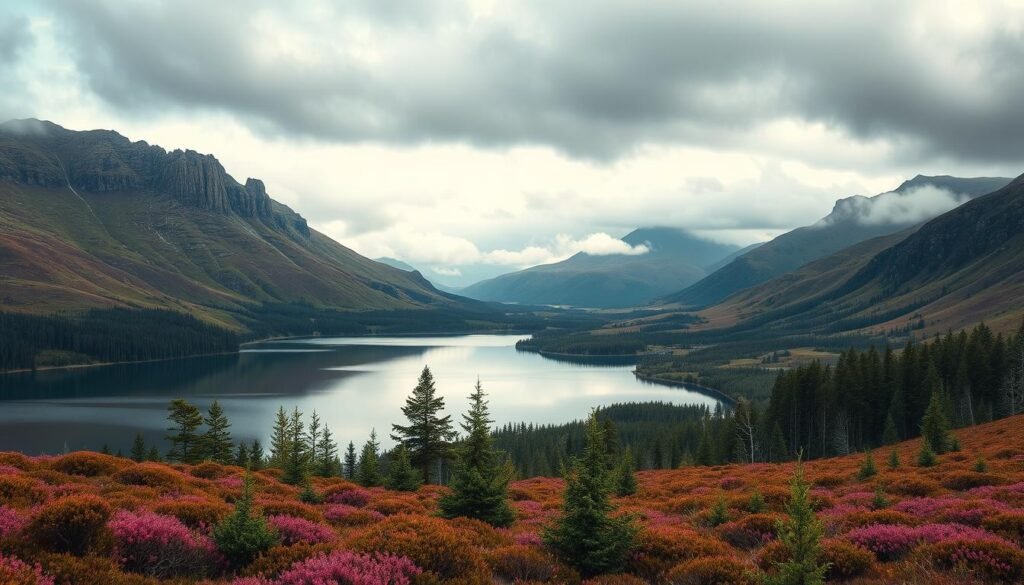
I find Scotland’s mix of moorland, islands, and gothic cities impossible to forget. The Highlands and Hebrides offer ridgelines, deep lochs, and shoreline drama that reward slow travel and flexible planning.
Highlands and Hebrides:
Hikes, lochs, and epic coastal drives
I base myself in the Highlands to chase ridgelines, then hop ferries to the Hebrides for raw coastal views. For drives I take routes through the Cairngorms and toward Skye, accepting narrow roads because the scenery is worth every slow mile.
Summer gives the best weather window, though I still pack layers and plan extra time in case rain arrives. Ferries link Skye, Harris, and Lewis—book ahead and map routes around schedules to save headaches.
Edinburgh’s gothic old town and castle skyline feel cinematic at dusk. Glasgow adds gritty, creative energy and museums that reset city days before I return to lochs and cliffs.
- National park-quality landscapes appear beyond formal parks; choose varied hikes to avoid midges.
- Prices can sting in remote places, so stock up in towns and book lodging early.
- I’ve ever felt more welcomed by locals—small pubs make rainy nights cozy.
For a quick inspiration boost, see my Scottish bucket list and pick the places that match your sense of adventure.You can learn more about est-places-to-visit-in-mexico
France: Paris icons, Côte d’Azur beaches, Alpine thrills
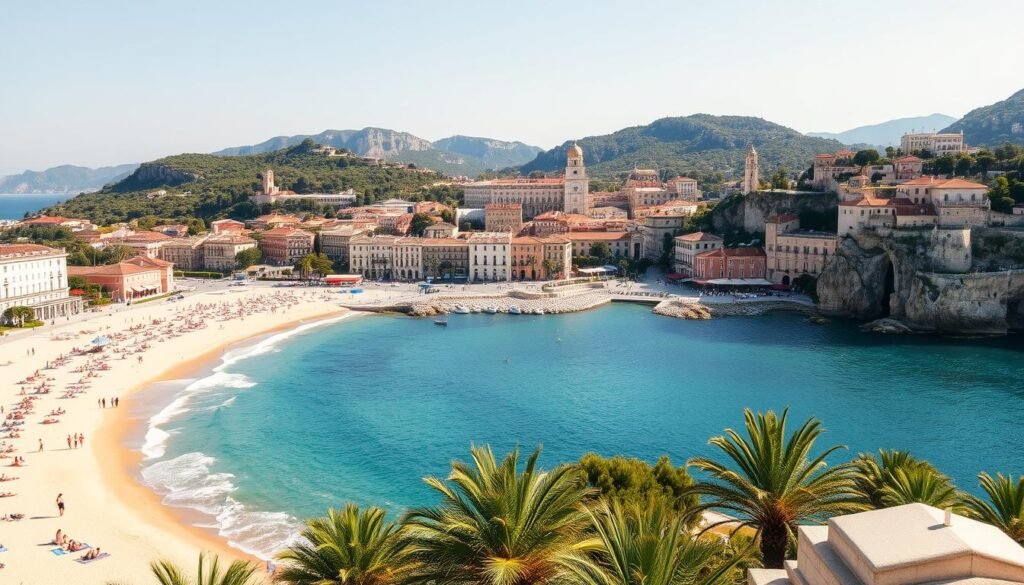
From Parisian museum days to Côte d’Azur swims, France folds city life and coast into one easy itinerary.
I note that France draws about 100 million visitors a year. Trains like the TGV make major cities a breeze to link, and driving in the countryside is smooth when I want freedom.
Paris to Côte d’Azur: From grand boulevards to beachy bliss
I split time between Paris and the Riviera: museum mornings and café-lined streets in the capital, then beaches and promenades down south.
My base in Nice lets me day-trip to Cannes, Antibes (Plage Keller), and Saint-Jean-Cap-Ferrat for Villa Ephrussi de Rothschild and cliff walks. I time lunches when beaches are quiet and pick Paloma Plage for a calm dip.
Best time: Late spring and early fall shoulder seasons
The best time for most of my trips is late spring or early fall shoulder seasons. Heat and crowds ease up, terrace life still hums, and trains stay reliable.
- I cluster museum entries in Paris and savor night strolls along the Seine when monuments glow.
- Fine dining shines, but I balance it with bistros and market picnics—simple meals feel elevated here.
- For alpine thrills I switch to Chamonix or Megève in winter; in summer I hike and take cable cars.
| Focus | Highlight | Travel tip |
|---|---|---|
| City rhythm | Paris museums, Seine nights | Cluster entries; walk between neighborhoods |
| Coastal stretch | Nice, Cannes, Antibes, Saint-Jean-Cap-Ferrat | Base in Nice; day-trip by rail or short drives |
| Alpine option | Chamonix, Megève | Winter for skiing; summer for hikes and views |
Germany: Grand history, fairy-tale towns, and museum-packed cities
Germany pairs stern history with storybook towns that seem lifted from an illustrated atlas. I blend museum days in big centers with slow drives through timbered lanes.
I pair Berlin’s modern museums and memorials with Munich’s beer gardens and palaces, then add the Romantische Strasse for old town charm and castles.
Trains make long hops simple, but I often rent a car to weave smaller towns into one relaxed loop. The Romantic Road links places like Rothenburg ob der Tauber and Füssen; I overnight in a walled town and enjoy quiet streets after crowds fade.
- I plan museum-heavy days on Museum Island and leave buffer time for scenic detours where things see pop up.
- In Munich I time beer gardens for sunny afternoons and sample hearty Bavarian food before palace walks.
- Major cities are well-signed in English, so first-timers find transit straightforward.
| Focus | Highlight | Tip |
|---|---|---|
| City rhythm | Berlin, Munich | Cluster museums; book ahead |
| Scenic drive | Romantic Road | Slow the pace; expect detours |
| Timing | Spring or early fall | Milder weather, fewer crowds |
Croatia: Walled old towns and crystal-clear Adriatic coves
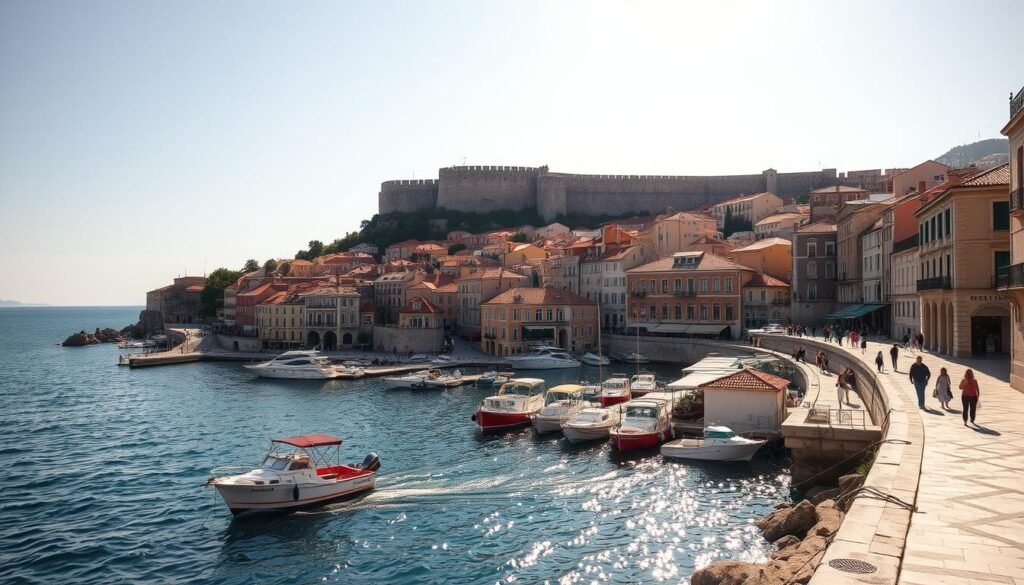
Croatia’s coastline rewards slow travel: narrow walls, quiet coves, and roads that beg for unhurried stops.You can learn more about best-time-to-visit-hawaii
I center trips on Dubrovnik’s old town, walking the walls early and slipping into side lanes for shade and views. Prices in the city have risen, so I sometimes sleep just outside and stroll in at dawn and dusk when it feels loveliest.
Dubrovnik and beyond: Elaphiti Islands, coastal roads, and fewer crowds in spring/fall
My preferred time visit is late spring—May and June—and September. Fewer crowds and warm sea make those months ideal. July–August brings intense demand and summer heat on stone streets.
- I book a private Elaphiti Islands and Blue Cave boat tour to reach quieter coves and see limestone cliffs from the water.
- For drives I follow the Magistrala coastal road, stopping at lookouts and for swims where the Adriatic turns unreal.
- I make sure to pack reef-safe sunscreen, water shoes for pebbly beaches, and cash for small beach bars.
- Evenings are for sea-view drinks—Beach Bar Dodo is a favorite—and seafood plates at Azur.
- Inland day trips like Trebinje add variety and value if I stay several nights.
Greece: Ionian blues, white-sand beaches, and laid-back island time
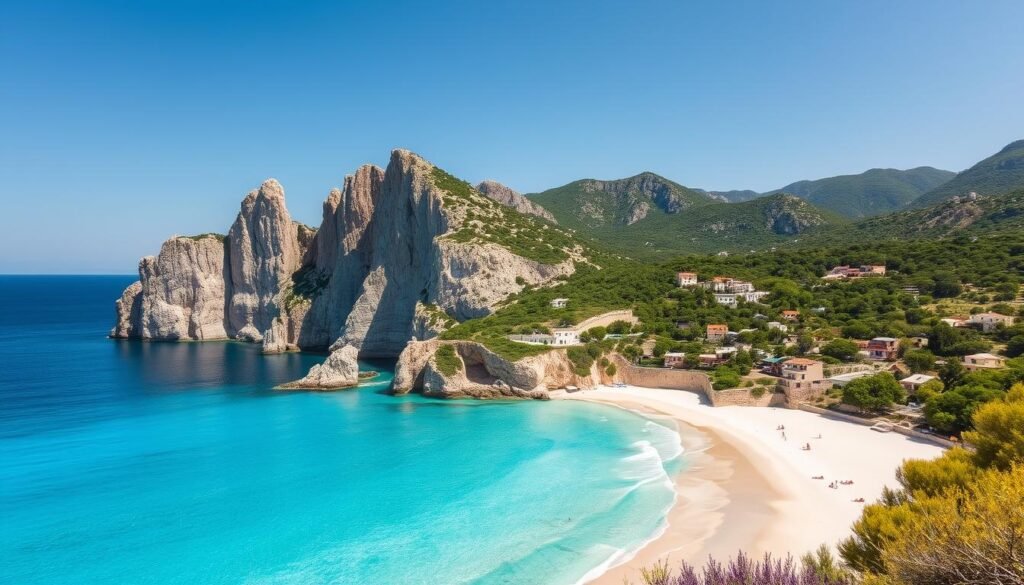
The Ionian island of Kefalonia rewards patience: skylit caves, pastel harbors, and calm bays.
I base most of my days here around swims and slow meals. I swim at Avithos Beach, wander Assos’s pastel houses, and boat into Melissani Cave when the light is perfect.
Kefalonia highlights: Assos, Melissani Cave, and perfect swim spots
I plan a half-day in Fiskardo for harbor views and a long seafood lunch. Villas work well for groups; I stock up at markets and grill fish on quiet nights.
- Summer brings peak warmth and regular boats; I prefer June and September for warm seas and fewer crowds.
- Beaches range from broad white sand to tucked coves—bring snorkel gear and a light towel.
- Pad time for unplanned swims; some of my best moments happen between official sights.
I swing by King George’s Castle and refuel at Kastro Cafe afterward. Old town lanes in island villages make for slow wanders and sunset photos. Ferries link nearby islands and Zakynthos day trips; I check schedules early in peak weeks.
| Spot | Why go | Tip |
|---|---|---|
| Melissani Cave | Skylit underground lake | Boat when light is strong |
| Assos | Calm swimming water | Arrive early for quiet |
| Fiskardo | Picturesque harbor and old town | Half-day for lunch and strolls |
Make sure you leave a little free time each day. Kefalonia is one of those places where slow hours feel like the point. For practical travel notes on island links and schedules see how to reach the Greek islands.
Finland: Clean, creative cities and nature on your doorstep

Helsinki mixes clean design, marina views, and a sauna culture that reshapes how I slow down in a city.
I use Helsinki as a base for design-forward cafes and waterfront saunas like Löyly, then pop into forests in under an hour. Tram and metro make getting around simple, and bikes link neighborhoods when the weather is dry.
Nuuksio national park is my go-to for an easy day hike. I often end with a campfire lunch by the lake and a quiet paddle. Lakes and islands ring the city; I ferry out for a half-day when I need a reset from urban streets.
Summer stretches daylight nearly around the clock up north, while winter brings aurora season and very short days. I pack layers and build flexible time into my plans.
- Mix markets and Nordic dining with relaxed sauna sessions.
- Creative districts reward meandering — coffee, galleries, and boutique finds.
- For quiet adventure, a multi-sauna afternoon plus a Baltic plunge is unforgettable.
| Season | What I do | Tip |
|---|---|---|
| Summer | Long days, island ferries, outdoor cafes | Book saunas and ferries early |
| Autumn | Golden birch, crisp air, cozy restaurants | Layer up; cafes fill at dusk |
| Winter | Aurora chases in the far north | Allow extra time for weather delays |
Finland is where city life and wild calm meet effortlessly. If you want accessible nature and creative urban energy in one stay, this country delivers memorable places europe and quiet moments for adventure.
Türkiye: Secluded bays, beach clubs, and easy-breezy resort living
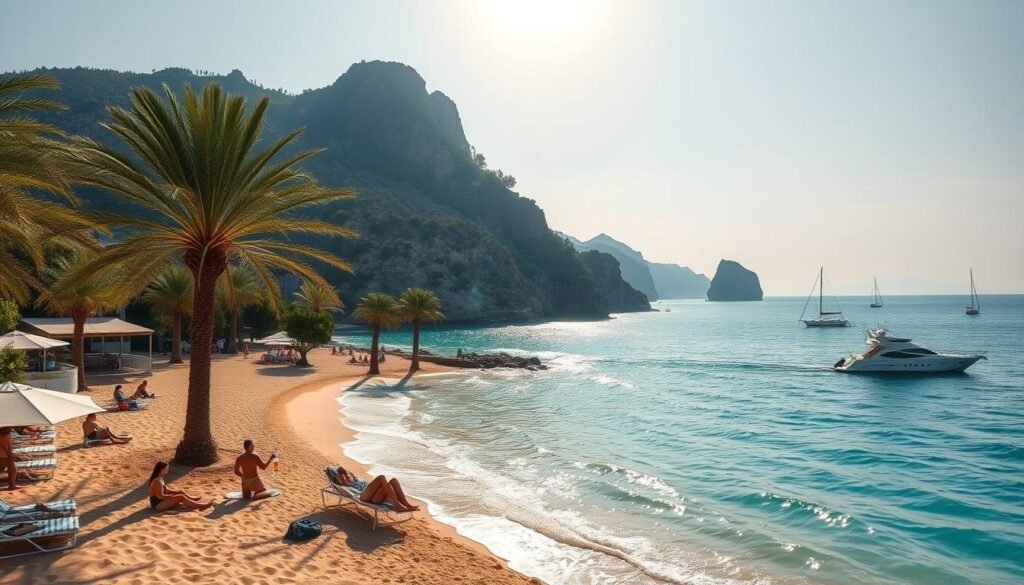
Türkiye’s Turquoise Coast is where I trade lists for long, slow days by the water.
I come here when I want secluded coves, calm sea, and resort comforts that make a trip effortless. Fethiye’s Hillside Beach Club nails that vibe with full-board service, multiple beaches (including an adults-only option), and two spas.
The place hosts lively themed nights like the white party at Pasha on the Bay. Drinks are affordable and you can often order from your chair via an app. Summer (June–September) is the prime window; I reserve sea-view rooms early for peak time.
My go-to rhythm: lazy mornings, a late-afternoon dip, and a sunset boat ride. I make sure I book an adults-only beach day and a gulet cruise for hidden bays and snorkel stops.
- I day-trip to Kayaköy for atmosphere, then swim back at the resort.
- Full-board removes planning stress; food is fresh and generous.
- It’s an easy country for friends or family—everyone finds a groove between spa, beach, and simple excursions.
City energy vs. beach days: Pick your perfect Europe trip vibe
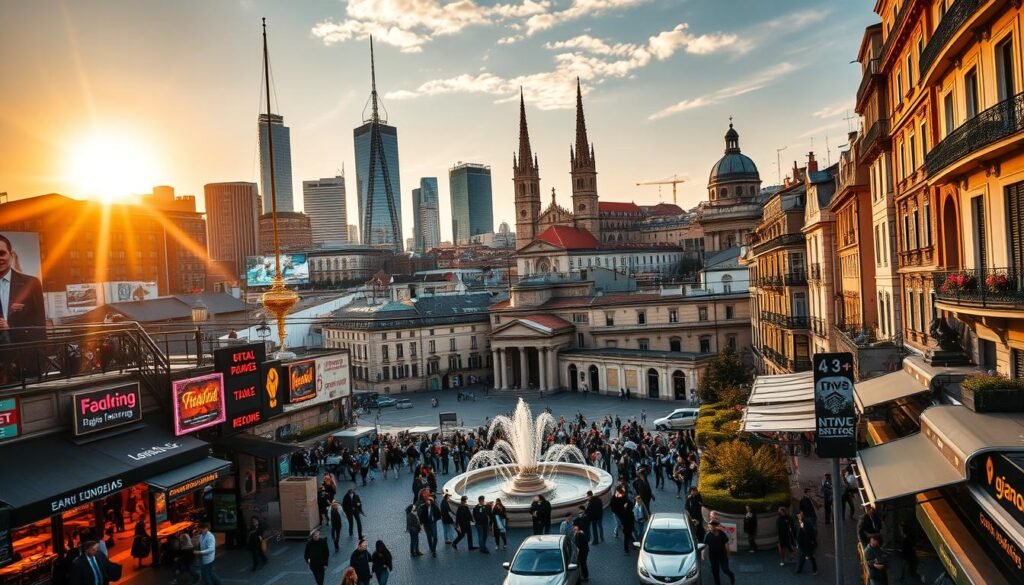
I often decide a trip by whether I crave museum mornings or golden-hour swims. That choice sets the daily rhythm, packing list, and how I book transport.
City-heavy plans favor walkable neighborhoods, art-rich museums, and nights that run late. I stitch cities like Paris and London or Prague, Vienna, and Budapest into tight loops when transit is easy. This keeps my days full without burning out.
City lovers: Art, architecture, and old town streets
For cities, I balance a museum, a neighborhood wander, and a late dinner each day. That mix gives depth without fatigue.
- Route picks: cluster nearby museums and save pockets of time for slow walks down old town streets.
- Heat note: in summer I prefer evening walks and early starts—museums can be cooler midday.
- Transit: choose places with strong rail or metro links for quick hops.
Beach seekers: Summer sun, calm coves, and coastal drives
For beaches, my day starts with an early dip and a long lunch in the shade. I chase calm coves in Greece, Spain’s islands, or the Riviera for scenic drives and sea swims.
- Pacing: plan a golden-hour cruise or cliff walk rather than packing too many sites into one day.
- Mixing both: I often do 3–4 city nights first, then 3–4 beach days to decompress before heading home.
- Logistics: beach trips benefit from a car for hidden places; city trips use public transit.
Best time to visit Europe by season
![]()
Timing changes everything. I match dates with the rhythm I want: long daylight for road trips, gentle warmth for city combos, or cold and festive winter markets. Below I lay out how each season shapes routes and moods so you can pick a time year that fits your goals.
Spring (March–May): Southern sunshine, city combos, and scenic rail
Spring often feels like a reset. I plan city combos such as Amsterdam-Brussels-Bruges or Berlin-Warsaw-Krakow when crowds are thin.
It’s ideal for drives on Germany’s Romantic Road, Croatia’s Magistrala, and hikes like Italy’s Dolomite High Route. The Douro Valley train is a quiet treat before peak season.
Summer (June–August): Long days, road trips, and Nordic glow
Summer brings near-24-hour light up north and warm seas elsewhere. I steer toward Scotland, Copenhagen, Oslo, and the Baltics to use long evenings.
Plan road trips like Iceland’s Ring Road or Scotland’s NC500, but avoid midday heat in cities like Paris, Rome, and Madrid.
Fall (September–November): Golden light, shoulder-season serenity
Fall offers warm seas and calm sights. I return to Tuscany, Cinque Terre, the French Riviera, and Greek islands when light is soft and lines shrink.
The Canary Islands stay beachable late, and routes like Paris–Bucharest shine for rail lovers.
Winter (December–February): Markets, Alps skiing, and mild southern city breaks
Winter flips the map: Alps skiing and holiday markets up north, while southern cities such as Seville or Rome feel mild and less crowded.
Aurora chases call in the far north, though daylight is short—plan accordingly.
- Tip: If you’re flexible, shoulder seasons give the best mix of weather and value.
- My approach: match the season with what matters—warm water, long daylight, or festive magic.
Shoulder seasons: The smart way to see Europe with fewer crowds
I plan most trips around the quieter windows in spring and fall because they let me see more without the rush. These shoulder seasons—early March through early June and September through mid-November—hit the sweet spot across the year for weather and value.
Why spring and fall deliver the best balance of weather, prices, and availability
Spring fall windows keep top museums and scenic routes open while cutting lines and heat. I still pre-book headline entries, but fewer crowds mean museum mornings and relaxed dinners feel possible again.
I use this time to tackle city wish lists and bucket-list places europe without feeling rushed. Even in Italy and France the vibe is lively but manageable; restaurants take reservations and major sites are easier to time.
- I book early starts and late dinners to dodge tour-bus waves.
- Daylight is generous for sightseeing, and layered clothes cover cool mornings and warm afternoons.
- Prices improve versus peak summer, though bargains vary by place and week.
How long to stay and how to plan your route
I map routes around how many relaxed mornings and long dinners you want, not how many stamps you can collect. Good pacing makes a trip feel generous and usable.
Perfect week-long itineraries
For 7 days I often pair italy france — three nights in Paris and four in Rome or Florence, linked by a short flight or a night train. That gives museum mornings and slow afternoons without rush.
Another tidy week is Spain + Mallorca: three nights in Barcelona, then four on the island for beaches and quiet coves. I fly into one city and out of another to save hours.
Two-week grand european loops
For 10–14 days I build a grand european loop: four nights in two anchor cities and 2–4 nights on a coast or by a national park. Trains handle city hops; I rent a car for countryside detours.
I structure each day with one anchor sight in the morning, one flexible stop midday, and free time for neighborhoods in the late afternoon. That balance helps you truly visit places instead of racing through them.
| Length | Typical split | Transport | Why it works |
|---|---|---|---|
| 7 days | 3 nights city A / 4 nights city B or island | Flight or high-speed train | Keeps transfers short; more full days |
| 10–14 days | 4 nights anchor / 4 nights anchor / 2–4 coast or park | Trains + one rental car leg | Mix of cities and nature; flexible pacing |
| Custom pace | Cluster nearby places into 2–3 bases | Short rail hops or drives | Less transit, more time in each spot |
Planning trip tip: book headline tickets early (Vatican, Alhambra, Eiffel summit) and select flight times that give usable mornings and restful arrivals. Match the pace to your group so culture lovers and beach fans both get days they remember.
Budget snapshot: What costs look like across top destinations
Money shapes choices more than maps: I budget trips so the highlights don’t break the trip. This quick snapshot helps set realistic expectations for a week or a longer trip in a given country.
Higher-price tier
Norway, Iceland, Scotland, and the Côte d’Azur sit in a higher-price bracket. Flights, lodging, and meals—especially fine dining—add up fast here.
Scotland’s remote roads and limited highways push transport costs. The French Riviera charges a premium for sea views and season-driven room rates.
Value-friendly choices
Spain, Greece, Türkiye, and parts of Croatia stretch your budget further. In Spain I eat where locals pack the bar—food good and prices friendly—saving splurges for one special night.
Türkiye’s resort packages in Fethiye and low drink prices make lazy beach days affordable. Dubrovnik is stunning, but prices rose this year; I offset that with lunches off the old town and nearby day trips.
“Spend where it matters—memorable experiences, save on taxis and multi-course lunches.”
| Tier | Notes | Quick tip |
|---|---|---|
| High | Norway, Iceland, Scotland, Côte d’Azur | Book refundable rates; expect higher daily spend |
| Value | Spain, Greece, Türkiye, parts of Croatia | Use markets, public transit, and local eateries |
| Mixed | Italy (north vs south), Dubrovnik area | Base outside hotspots; day-trip into cities |
Planning tips: Beating crowds, booking smart, and timing your days
I plan my trips around timing and tempo—when crowds thin, a city feels like mine for a morning. Small choices in booking and daily rhythm save hours and make days more relaxed.
When to book
I book peak summer and December trips months ahead because mid-June–August and late December–early January draw the biggest crowds and scarce availability. Many businesses close in parts of August, and heatwaves hit cities like Paris, Rome, and Madrid.
- I check local calendars for festivals and marathons that strain hotels—then avoid or lean in if I want that energy.
- I buy skip-the-line and timed entries for headline museums; flexibility won’t help if the slot is sold out.
- I reserve one or two key dinners and leave the rest open for local tips.
Daily rhythm
My day starts early: first entry for big sights, a late lunch during rush, then a second wave after 4 p.m. In cities like Paris or Rome I plan indoor museums for midday heat and outdoor walks in cool mornings and evenings.
| Issue | Action | Why it works |
|---|---|---|
| Crowds | Book ahead; use timed tickets | Cut waiting and reclaim hours |
| Heat or closures | Shift sightseeing to mornings/evenings | Stay comfortable and keep pace |
| Weather or strikes | Leave buffer days | Absorb delays without stress |
“Small habits—water, umbrella, sun protection—save comfort and time in lines.”
Best European countries to visit
When I plan a trip I first match the mood I want—food, sand, ruins, or rugged ridgelines—and then pick a destination that feeds that mood.
Quick picks by travel style
Foodie: I pick Italy and France for regional depth and wine. Spain follows for lively markets and tapas culture.
Beach: Greece’s islands, Mallorca and the Canary Islands, the Côte d’Azur, and Türkiye’s Turquoise Coast top my list.
History: Italy and France hold layered sites from ancient to modern. Spain adds Roman and Moorish chapters, and Germany shines with museums and memorials.
Adventure: Scotland’s Highlands, Italy’s Dolomites, and Iceland’s Ring Road deliver serious scenery and thrills.
| Style | Pairing idea | Why |
|---|---|---|
| City + coast | Rome + Amalfi, Barcelona + Mallorca | Easy hops, big contrasts |
| Quick cluster | Tuscany towns, Riviera from Nice | Less transit, more depth |
| Grand loop | Two cities + coast or mountains | Classic grand european rhythm |
Budget note: Spain, Greece, Türkiye, and parts of Croatia stretch funds further; Scotland and the Côte d’Azur sit at the splurge end.
Pick the country that fits your vibe and each day will feel like your kind of perfect. I match routes around slow mornings and great dinners, not ticking off places.
Conclusion
Conclusion
What started as scattershot trips years ago became a steady method: pick a city, add nearby spots that contrast, and leave room for surprise. I’ve spent long hours testing rhythms and pacing so your plan feels relaxed rather than rushed.
Use an anchor for logistics, save two open days for serendipity, and aim for shoulder-season dates when you can—those months give back time lost in lines and heat. My guide highlights routes like the Romantic Road and the Magistrala and points you toward places that match your mood.
You don’t have to see everything. Choose the few things that matter, book the anchors, and go—one clear plan beats twenty perfect maybes.


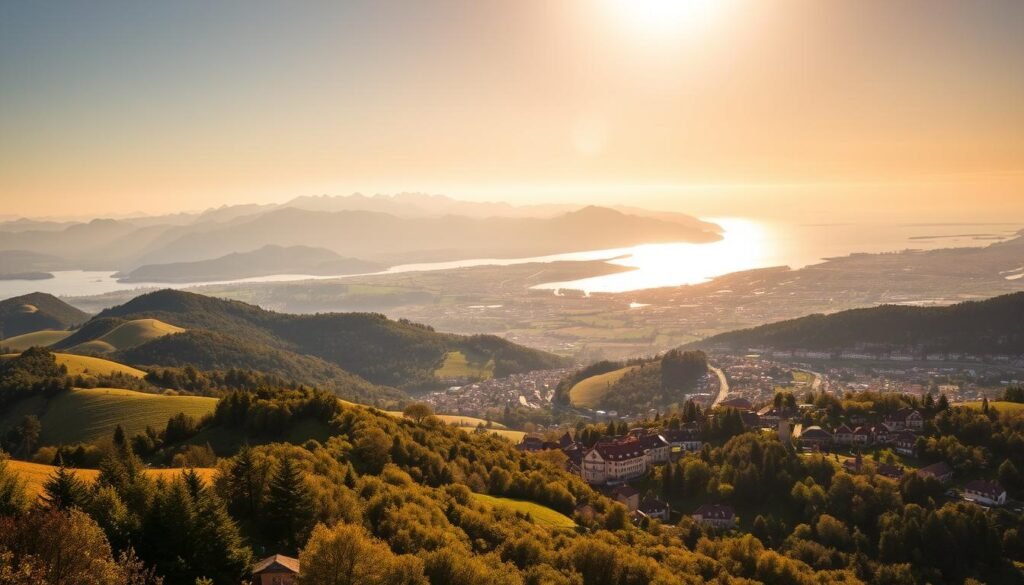



















One Response